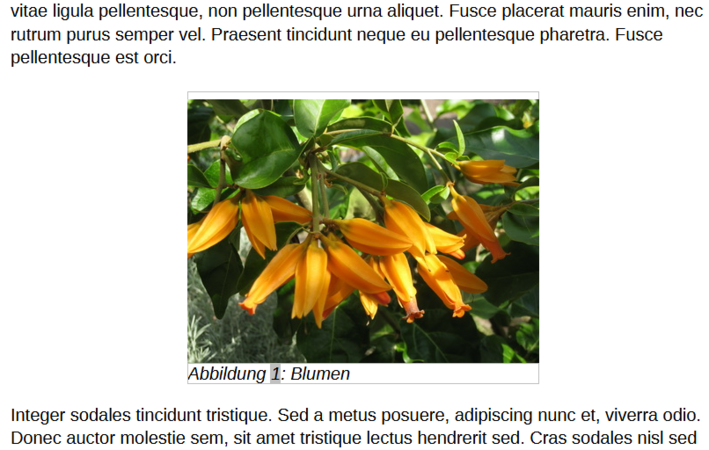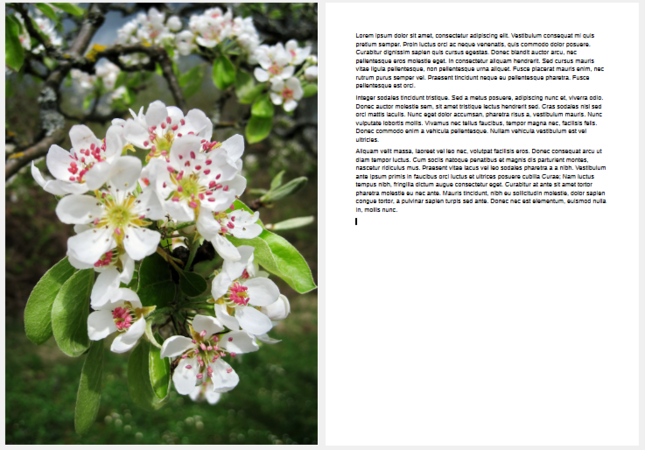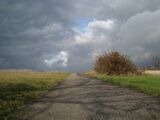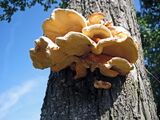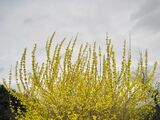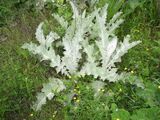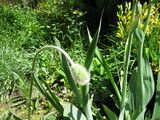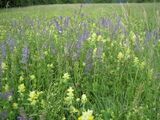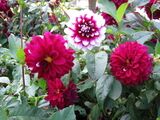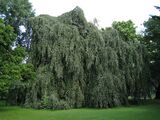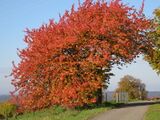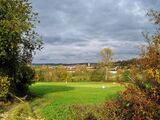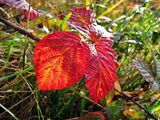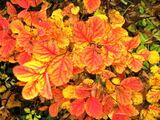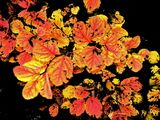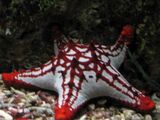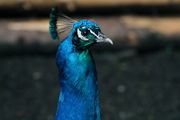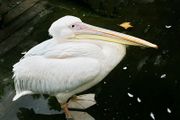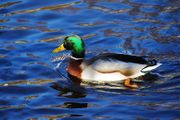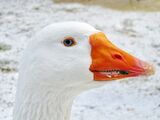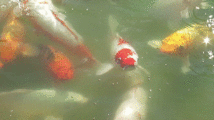Inserting images in Writer Part 3
TDF LibreOffice Document Liberation Project Community Blogs Weblate Nextcloud Redmine Ask LibreOffice Donate
This page is in work!
Foreword in part 3
Insert and edit images in Writer consists of 3 parts. This video shows various techniques, how to „Insert Images“ in LibreOffice Writer and links to this page here for more information and details.
The individual topics
| Topics related to inserting and editing images in Writer |
| Part 1 | Part 2 | Part 3 |
|---|---|---|
| Basics for inserting images | How to create a border | Insert images centered in the document |
| Insert images | Insert Images into table cells | Inserting a small icon or graphic into a sentence |
| Check the presets | Create Collages | Insert a full-page image on the first page of a document |
| Inserting an image into a Writer table | Cut an Image into a Shape | --- |
| Examine a document | --- | --- |
You can find more pictures at: Used images
-
Bild_025_k.JPG
-
Bild_015_k.JPG
-
Bild_017_k.JPG
-
Bild_027_k.JPG
-
Bild_007_k.JPG
Link to the Video
Link to the Video (in German [DE]): Einfügen von Bildern in Writer Teil 3 - LibreOffice
Insert images centered in the document
If you are writing documentation, you also want to minimize the effort involved in inserting and labeling images. Specifications for an inserted image can look like this:
- An image should appear centered between the page margins (image width from approx. 5 cm).
- There should be a gap at the top and bottom of the next paragraph.
- There should be no sideways text wrap.
- The anchoring should include an empty paragraph so that the image with caption frame represents a separate paragraph.
To meet these requirements, an additional paragraph style is required and a frame style must be adapted.
-
Image inserted centered in the document
Preparing the Styles
Character style
Since, as already mentioned, an additional paragraph style is required, you will now create this.
Open the sidebar in the menu ▸ ,
( Ctrl+F5 ).
Select the "Paragraph styles" icon in the "Styles" area.
Rightclick on the "Default Paragraph Style" paragraph style and select .
Enter a name in the "Paragraph Style" dialog in the "General" tab - Name: "AlignmentCentred".
In the "Next style" field, select "Body Text".
In the "Alignment" tab select "Center" under "Options“.
Click on .
Frame style
Now select the "Frame Styles" icon in the sidebar in the icons area above. Rightclick on the "Graphics" Frame style and select In the "Frame Style" dialog in the "Wrap" tab, select the "Spacing" for the Top and Bottom. - Top: "0.25 cm" and Bottom: "0.50 cm". Click on .
Save as Document template
You may want to save the document with the customized Styles as a Document template.
Inserting a picture
To insert an image, proceed as follows: Place the cursor in an empty paragraph where you want the image to appear. Insert an image, for example by clicking on the "Insert image" icon on the "Standard" toolbar. Select the desired image in the file browser and then click . The image is now inserted in your document. Rightclick on the image and select ▸ from the context menu. The image is now positioned on the left and the text on the side is pushed down. Place the cursor to the right of the image and assign the paragraph style "AlignmentCentred" by doubleclicking on it. This will reposition the image centered between the page margins.
Optional caption
Rightclick on the image and select from the context menu. In the "Insert Caption" dialog, select the Category (e.g. "Figure") and enter the caption for the image in the "Caption field. Click on . The image is now positioned centered between text paragraphs as a separate paragraph with the definition anchor "As character" and has a lower left-aligned caption.
Inserting a small symbol or graphic into a sentence
For example, if you want to insert a small symbol into a sentence, proceed as follows: Place the cursor in the text at the point where you want to insert the symbol. Select "Insert Image" from the "Standard" toolbar. Insert the image (the symbol). Right-click on the image and select ▸ from the context menu. Select the inserted symbol so that the anchor is visible. This allows you to drag the anchor and/or the image with the mouse to the paragraph where you want to insert the image. The image may displace the text, but you can fix this step by step.
The next step is to adjust the symbol size to match the font height of the paragraph text. In the sidebar ( Ctrl + F5 ) under "Properties>Position and Size" check the box next to "Keep ratio". Change the height to approximately 0.4 cm (for a font size of 12pt in Liberation Sans). Right-click on the symbol again and select ▸ . Use the arrow keys to move the symbol to the desired position in the text (approximately). Right-click on the symbol and select . In the "Image" dialog, select the "Wrap" tab. For "Spacing" enter 0.10 cm for "Left" and "Right" and 0.00 cm for "Top" and "Bottom". Click .
Position the symbol using the Alt + Arrow keys. Once the symbol is the correct size and in the correct position, right-click on the symbol and select ▸ from the context menu. Repeat the fine-tuning for "Up" or "Down" if necessary. If necessary, insert an additional space in the text at the desired location.
-
Inserted a symbol in a sentence
Inserting a full-page image on the first page of a document
When creating a book, there is often a desire to place a full-page image on the first page (also known as the cover page). You can achieve this with a separate Page Style, such as the existing "First page" Page Style.
-
Image inserted full page
Modifying the "First page" Page Style
You will now modify the "First page" Page Style so that the desired image can be inserted on the entire page. Open the sidebar via the menu ▸ ( Ctrl + F5 ) and click on the "Styles" icon to the right of it ( Ctrl + Alt + 2 ). Click on the "Page Styles" icon at the top of the sidebar. Right-click on the "First Page" Page style and select In the "Page Style" dialog, click on the "Page" tab. In the "Margins" area, set all values to 0.00 cm. Click on .
Depending on the existing or set printer, you will be asked:
Your settings for the margins are outside the print area. Would you still like to apply these settings?
Click and save your document.
Insert a picture on the first page
Reopen the document in which the first page is to have a full-page image.
Place the cursor on the empty paragraph at the top left of the first page. Doubleclick on the "First page" Page Style. Select ▸ ▸ from the menu. A page is inserted after the first page, with assignment to the "Default Page Style" Page Style, as this is set as a next style in the "First page" Page Style. Place the cursor back on the empty paragraph at the top left of the first page. Select ▸ from the menu. In the "Page Style" dialog, select the "Area" tab and click on the button. In the left area under "Image", click on the button. In the file browser, select the desired image for the first page and click . In the next dialog, you can confirm or change the name with . In the middle of the "Page Style" dialog under "Options>Style", select "Stretched" from the drop-down list. Click on . The image should now be inserted on the first page.
Save your document.
Further Informations
Work files (in German)
„Formatvorlagen - Einstellungen LO7632.ods“ + in EN
"01 Bilder einfügen in Writer-T3 - Arbeitsdatei für Video.odt"
"02 Bilder einfügen in Writer-T3 - Arbeitsdatei für Video.odt"
Used images
Bild_001_k.jpg to Bild_034_k.jpg and GIF_001_k.gif
-
Bild_001_k.JPG
-
Bild_002_k.JPG
-
Bild_002_k.JPG
-
Bild_004_k.JPG
-
Bild_005_k.JPG
-
Bild_006_k.JPG
-
Bild_007_k.JPG
-
Bild_008_k.JPG
-
Bild_009_k.JPG
-
Bild_010_k.JPG
-
Bild_011_k.JPG
-
Bild_012_k.JPG
-
Bild_013_k.JPG
-
Bild_014_k.JPG
-
Bild_015_k.JPG
-
Bild_016_k.JPG
-
Bild_017_k.JPG
-
Bild_018_k.JPG
-
Bild_019_k.JPG
-
Bild_020_k.JPG
-
Bild_021_k.JPG
-
Bild_022_k.JPG
-
Bild_023_k.JPG
-
Bild_024_k.JPG
-
Bild_025_k.JPG
-
Bild_026_k.JPG
-
Bild_027_k.JPG
-
Bild_028_k.JPG
-
Bild_029_k.JPG
-
Bild_030_k.JPG
-
Bild_031_k.JPG
-
Bild_032_k.JPG
-
Bild_033_k.JPG
-
Bild_034_k.JPG
-
GIF_001_k.gif
TDF-Wiki - Inserting and editing images in Writer
Insert and edit images in Writer Part 1
Insert and edit images in Writer Part 2
Topic book for this wiki page (in German)
Bilder einfügen und bearbeiten
Documentation / Manuals
Here you will find the Documentation / Manuals:
Any questions?
For questions on this topic go to:
Get Involved
Join us today and help us to make it even better!
Donate
LibreOffice is Free Software and is made available free of charge.
Your donation, which is purely optional, supports our worldwide community.
If you like the software, please consider a Donation.





